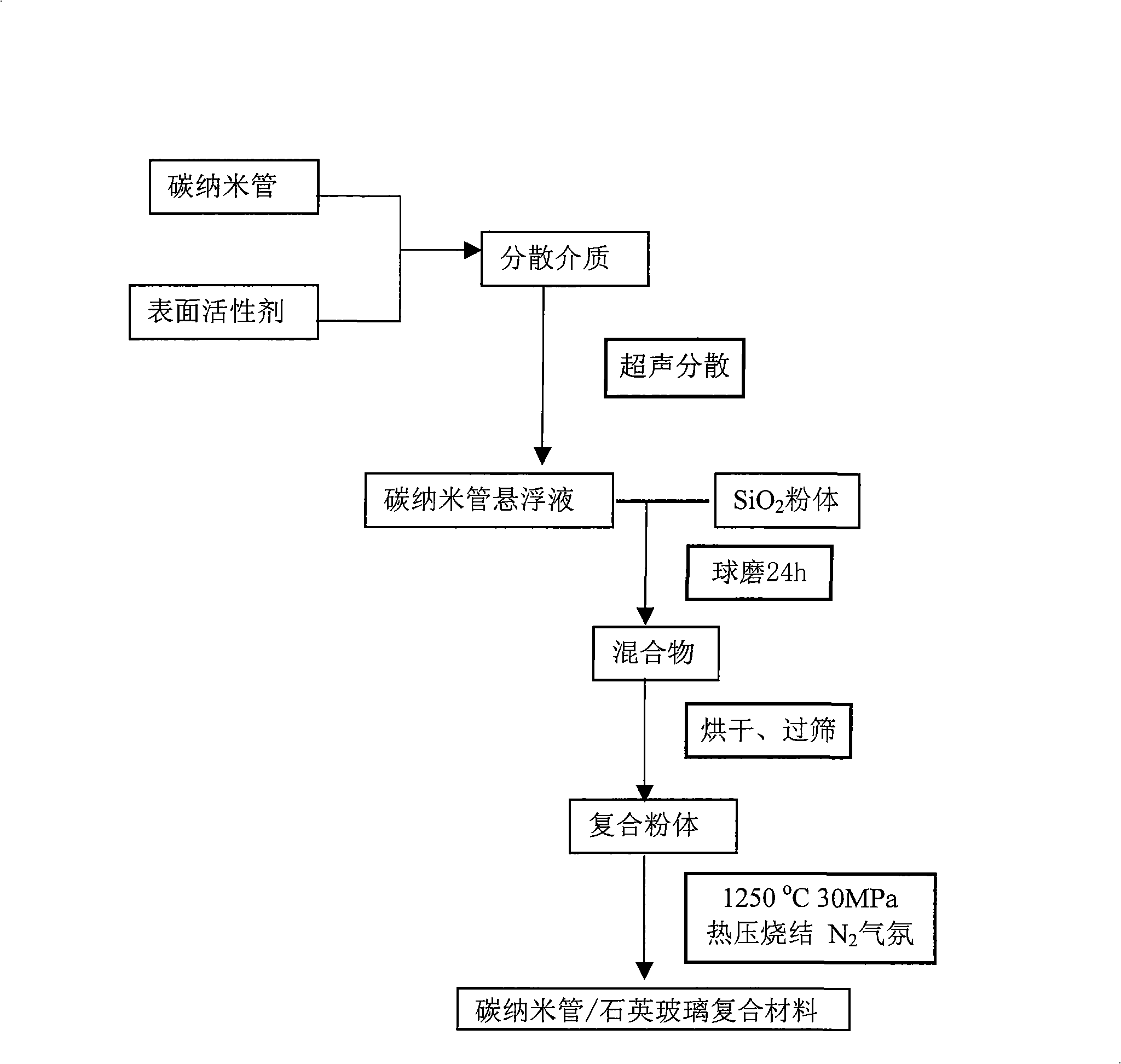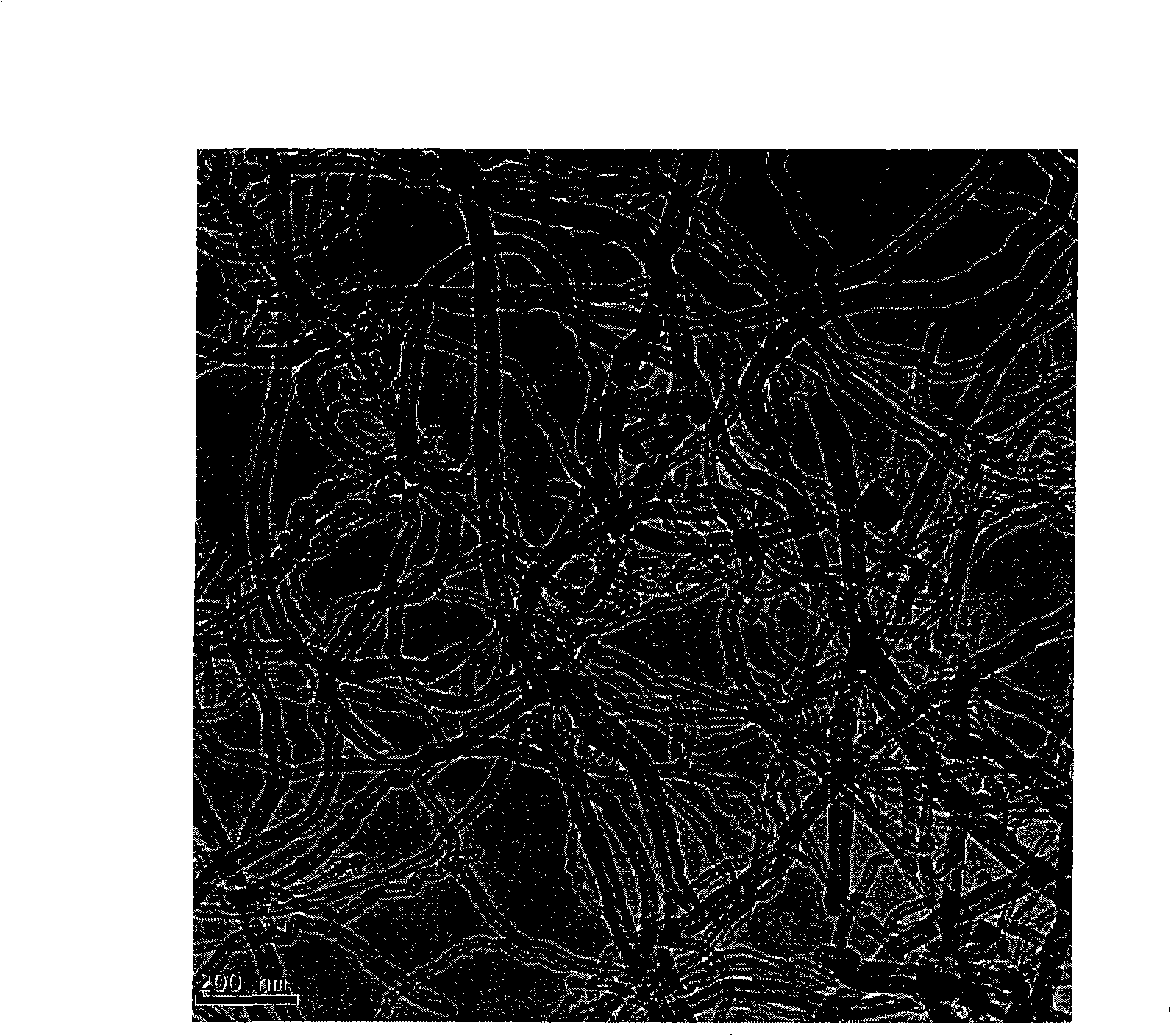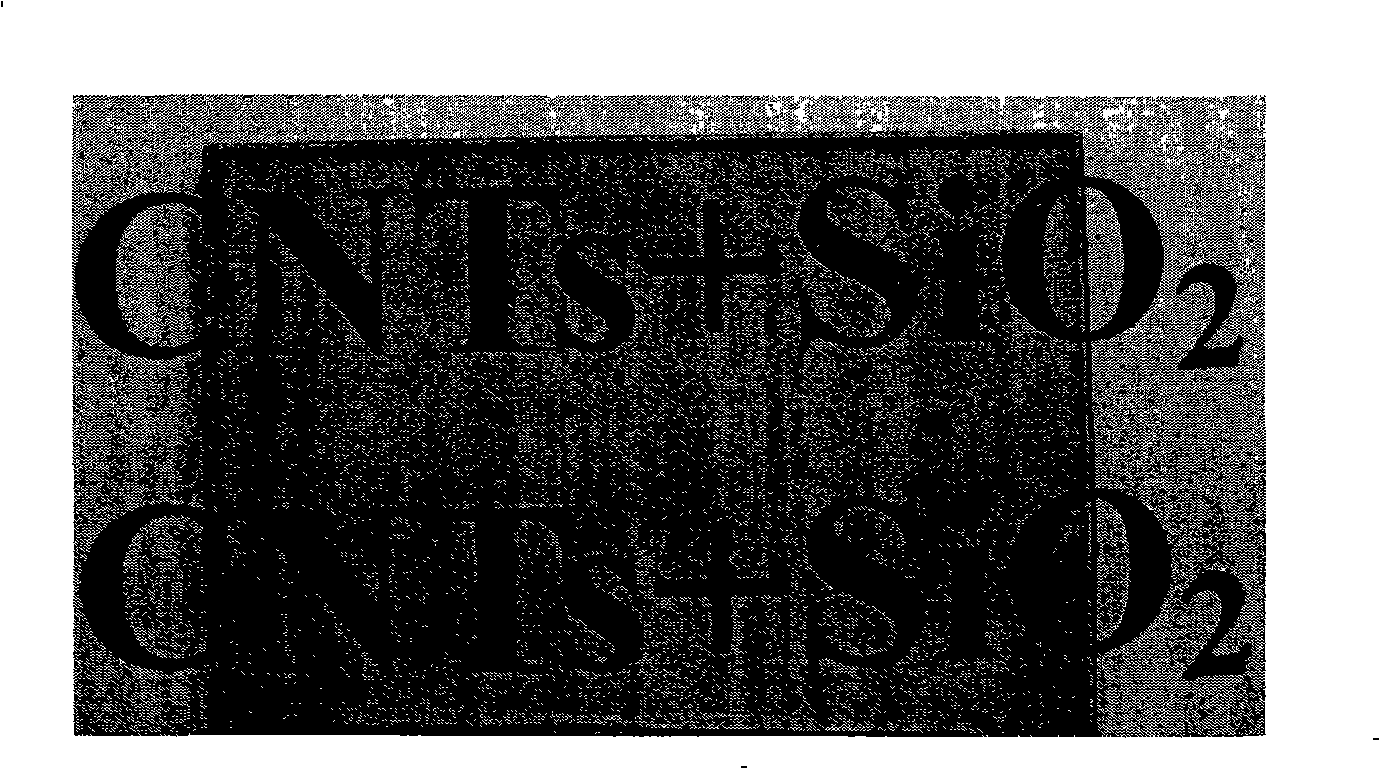Solid material with optical slicing characteristic and preparation method thereof
An optical limiting, solid-state technology, applied in the field of functional composite materials, can solve problems such as few research reports, and achieve the effect of high permeability
- Summary
- Abstract
- Description
- Claims
- Application Information
AI Technical Summary
Problems solved by technology
Method used
Image
Examples
Embodiment 1
[0038] A 0.02wt% carbon nanotube / quartz glass composite was prepared by direct ball milling.
[0039] Carbon nanotubes are multi-walled carbon nanotubes (transmission electron micrographs of CNTs as shown in figure 2 shown).
[0040] 10 mg of carbon nanotubes, 0.1 g of cetyltrimethylammonium bromide (CTAB) and 60 ml of absolute ethanol were mixed and stirred for 5 minutes, and ultrasonically dispersed for 30 minutes to obtain a suspension of carbon nanotubes. The above carbon nanotube suspension, 50g silicon dioxide (SiO 2 ) powder and 150g agate balls were added into a 600mL ball mill jar, and the mixture was obtained after ball milling for 24h. Then the mixture was dried at 100°C for 5 h, and after passing through a 200-mesh sieve, a CNTs / SiO with a CNTs content of 0.02 wt% was obtained. 2 Powder. Finally, the prepared CNTs / SiO 2 Powder is added in graphite mould, under the pressure of 30Mpa and pure nitrogen (N 2 ) under a protective atmosphere, hot pressing and sint...
Embodiment 2
[0043] The 0.06wt% carbon nanotube / quartz glass composite was prepared by sol-gel method.
[0044] 30 mg of carbon nanotubes, 0.3 g of sodium dodecyl sulfate (SDS) and 80 mL of deionized water were mixed and stirred, and ultrasonically dispersed for 40 minutes to obtain a suspension of carbon nanotubes. At the same time, 216 mL of tetraethyl orthosilicate (TEOS), 250 mL of absolute ethanol and 200 mL of deionized water were mixed, stirred for 5 minutes, and then ultrasonicated at 40° C. for 30 minutes to hydrolyze the tetraethyl orthosilicate. Then, the suspension of carbon nanotubes was poured into the hydrolyzed tetraethyl orthosilicate, and while stirring magnetically, ammonia water with a concentration of 2.6M was added drop by drop until it gelled. The gel was washed 3 to 4 times with deionized water and 1 to 2 times with absolute ethanol, dried in an oven at 100°C for 12 hours, and then calcined in a muffle furnace at 500°C for 2 hours to obtain CNTs / SiO 2 Composite pow...
Embodiment 3
[0047] A 0.15wt% carbon nanotube / phosphate glass composite was prepared by direct ball milling.
[0048] 150 mg of carbon nanotubes, 0.6 g of dimethylformamide (DMF) and 120 ml of absolute ethanol were mixed and stirred for 5 minutes, and ultrasonically dispersed for 30 minutes to obtain a suspension of carbon nanotubes. The above carbon nanotube suspension, 30g B 2 o 3 , 20gCaO and 50g P 2 o 5 The mixture was obtained after ball milling for 30 h. Then the mixture was heated to 200 °C in a muffle furnace at a heating rate of 2 °C / min and kept for 4 h. After cooling, grind and pass through a 200-mesh sieve to obtain a carbon nanotube / phosphate glass powder with a carbon nanotube content of 0.15 wt%. Add the composite powder prepared in the graphite mould, under the pressure of 30Mpa and pure nitrogen (N 2 ) under a protective atmosphere, hot pressing and sintering at 1000° C. for 60 minutes to obtain a carbon nanotube / quartz glass composite material.
PUM
 Login to View More
Login to View More Abstract
Description
Claims
Application Information
 Login to View More
Login to View More - R&D
- Intellectual Property
- Life Sciences
- Materials
- Tech Scout
- Unparalleled Data Quality
- Higher Quality Content
- 60% Fewer Hallucinations
Browse by: Latest US Patents, China's latest patents, Technical Efficacy Thesaurus, Application Domain, Technology Topic, Popular Technical Reports.
© 2025 PatSnap. All rights reserved.Legal|Privacy policy|Modern Slavery Act Transparency Statement|Sitemap|About US| Contact US: help@patsnap.com



